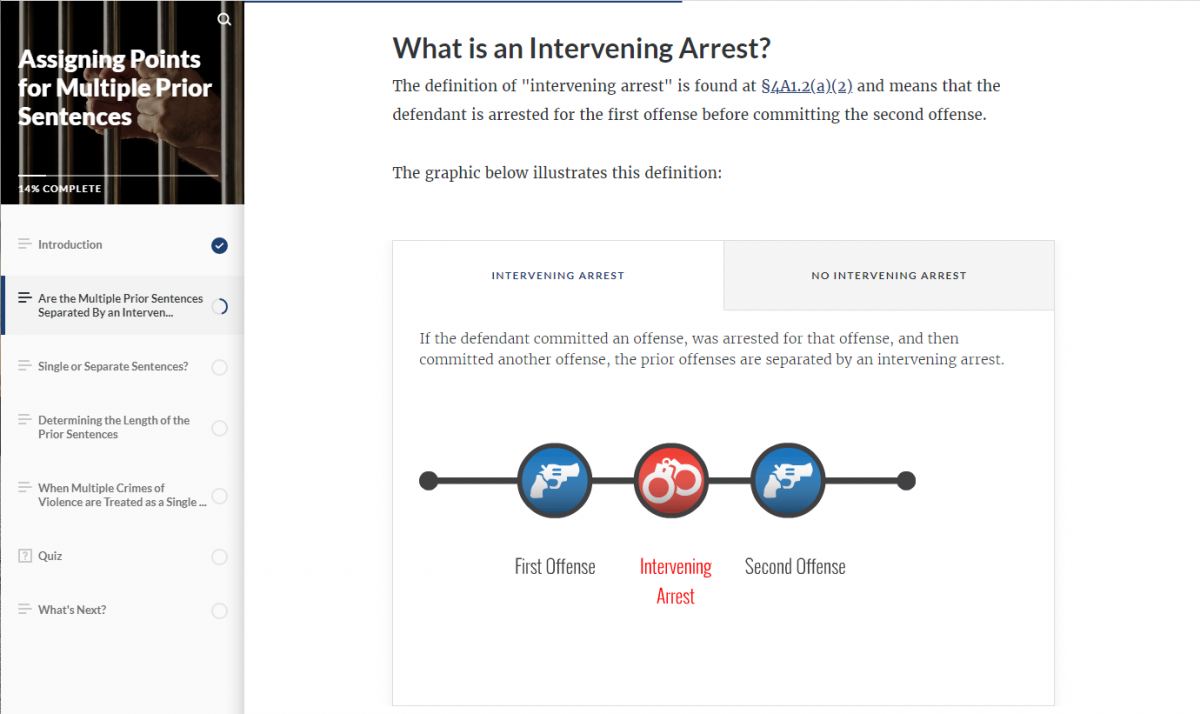Summary
(Updated September 2020) This eLearning module demonstrates how to apply §4A1.2(a)(2) following this Decision Tree.
Learning Objectives
By the end of this module, you will be able to:
- Use the Multiple Prior Sentences Decision Tree to determine criminal history points for a case involving multiple prior sentences;
- Define "intervening arrest" and explain its role in determining how to treat multiple prior sentences to determine the Criminal History Category for a particular defendant;
- Describe when multiple prior sentences will be assigned separate criminal history points;
- Define when multiple prior sentences will be treated as a "single sentence;"
- Determine the length of a defendant's multiple prior sentences treated as a "single sentence," differentiating between prior sentences imposed concurrently and consecutively;
- Calculate additional criminal history points at §4A1.1(e) when multiple prior sentences treated as a single sentence include multiple crimes of violence; and
- Apply the multiple prior sentences rules to calculate criminal history points using real-world scenarios.
You may also find that a copy of the Guidelines Manual will be helpful to you while progressing through this course. Before starting this module, you should be familiar with Chapter Four of the Guidelines Manual and have a good understanding of how criminal history points are calculated. Please be sure to have previously reviewed the Basic Criminal History course.

